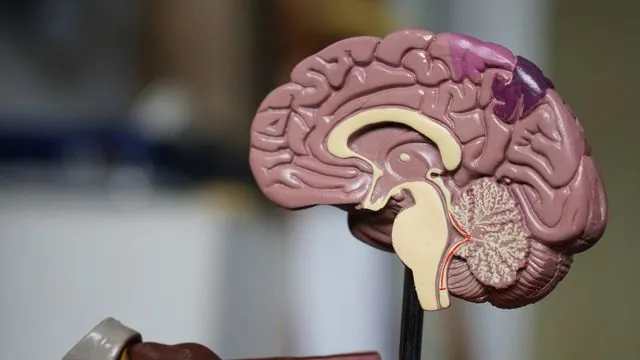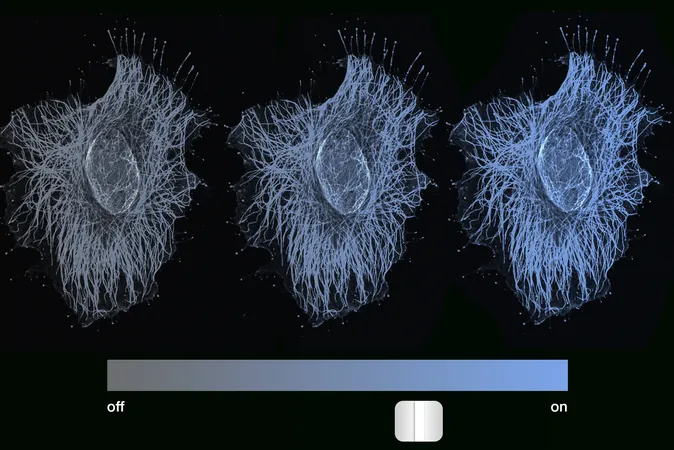
Revolutionary Wireless Neural Interface Set to Transform Drug Delivery in Deep Brain Regions
2025-09-09
Author: Ming
Unleashing the Future of Brain Treatments
In an exciting breakthrough, researchers at the Daegu Gyeongbuk Institute of Science and Technology (DGIST) in South Korea have unveiled a cutting-edge flexible wireless neural interface. This groundbreaking device promises to deliver drugs directly to deep brain regions, potentially reshaping treatment protocols for neurological disorders.
The Game-Changer in Drug Infusion Technology
Traditionally, drug delivery systems have relied heavily on cumbersome external equipment, but this innovative, fully implantable device aims to eliminate those limitations. The research findings have been highlighted in the prestigious journal, npj Flexible Electronics.
Inspired by Nature: A New Approach to Drug Delivery
Under the expertise of Professor Kyung-In Jang from the robotics and mechatronics engineering department, the team crafted this device using soft materials to ensure compatibility with delicate neural tissues. At its core, the device incorporates a micro-pump and an intricate microchannel system designed to facilitate precise drug infusion while minimizing the risk of backflow.
Harnessing Natural Mechanisms for Efficiency
The pump mechanism is cleverly modeled after peristalsis—an involuntary process that moves food through the digestive tract using wave-like muscle contractions. This design guarantees a continuous, unidirectional flow of medication, effectively preventing any reverse leakage. What’s more, the built-in wireless module empowers users to control both the infusion rate and dosage in real time.
Successful Trials: Testing on Brain Phantoms
To validate its efficacy, the team conducted tests utilizing a 'brain phantom' made from agarose gel, a substance adept at mimicking the consistency of biological tissues in experimental settings. These trials indicated consistent drug delivery without any backflow, demonstrating the device's reliability. Moreover, the wireless interface enabled precise dosage modulation without the need for external apparatus.
Towards Personalized Treatments for Neurological Disorders
While the current study is rooted in preclinical models, the researchers are optimistic about the potential for future adaptations. Professor Jang highlighted, "The device developed in this study has enabled precise wireless drug delivery to deep regions of the brain. Moving forward, we will validate its long-term stability and expand its applications across various neurological disorders."
A Vision for Integrated Monitoring and Treatment
The team envisions a future where this technology could be integrated with electrodes and sensors, allowing for real-time monitoring of neural activity. This capability could lead to responsive drug release triggered by specific physiological signals, paving the way for new treatments for chronic conditions like Parkinson's disease and epilepsy.
The Next Frontier in Neurotechnology
This wireless interface represents a monumental leap forward in neurotechnology, with the potential to revolutionize how we approach treatment for complex brain diseases. The implications are vast, and as research progresses, this innovative device could dramatically improve the quality of life for many.




 Brasil (PT)
Brasil (PT)
 Canada (EN)
Canada (EN)
 Chile (ES)
Chile (ES)
 Česko (CS)
Česko (CS)
 대한민국 (KO)
대한민국 (KO)
 España (ES)
España (ES)
 France (FR)
France (FR)
 Hong Kong (EN)
Hong Kong (EN)
 Italia (IT)
Italia (IT)
 日本 (JA)
日本 (JA)
 Magyarország (HU)
Magyarország (HU)
 Norge (NO)
Norge (NO)
 Polska (PL)
Polska (PL)
 Schweiz (DE)
Schweiz (DE)
 Singapore (EN)
Singapore (EN)
 Sverige (SV)
Sverige (SV)
 Suomi (FI)
Suomi (FI)
 Türkiye (TR)
Türkiye (TR)
 الإمارات العربية المتحدة (AR)
الإمارات العربية المتحدة (AR)